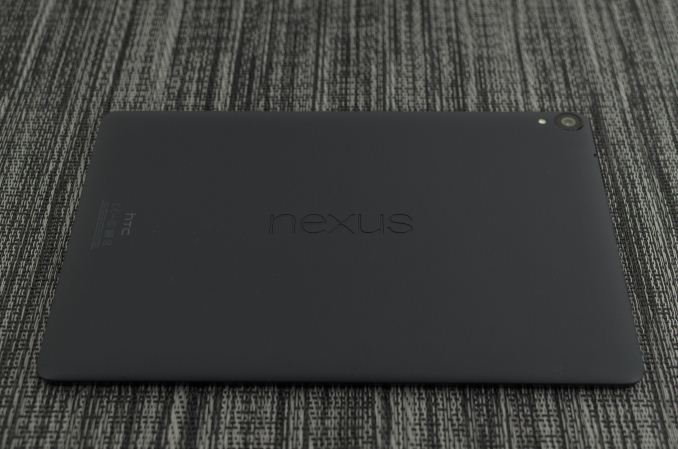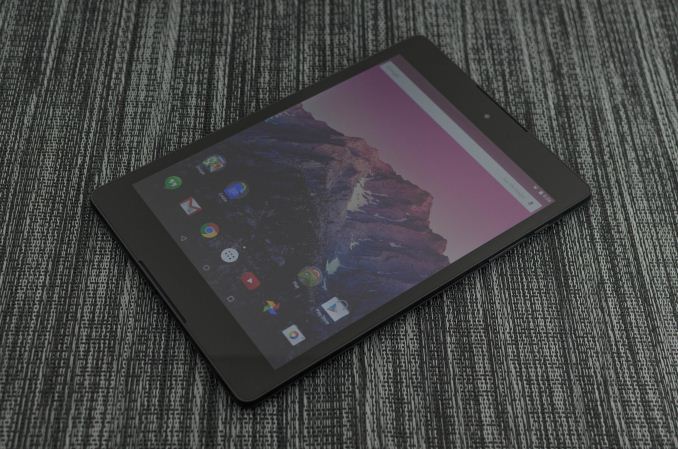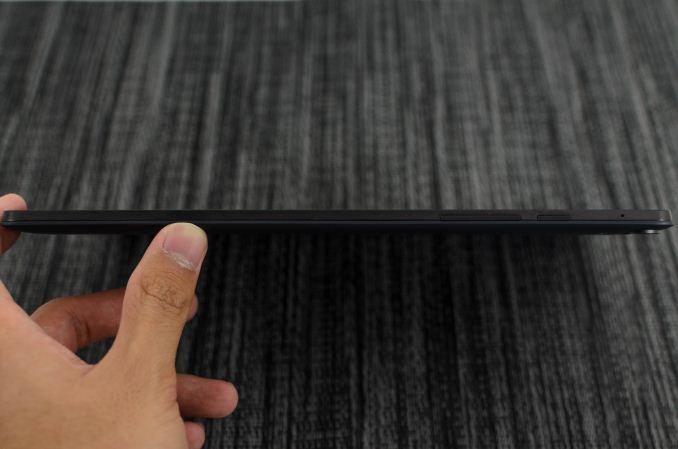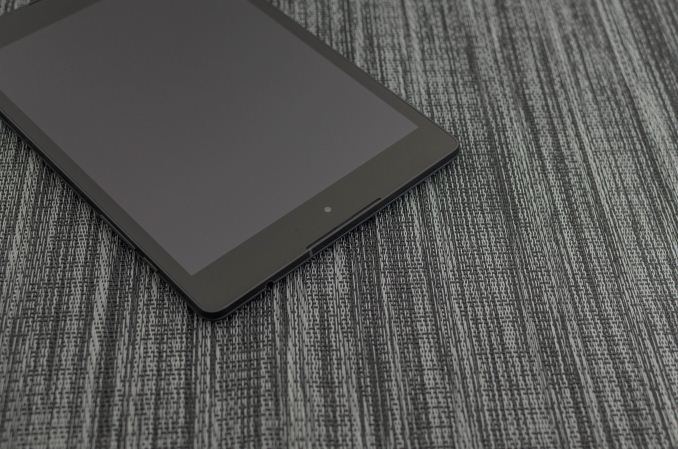Google Nexus 9: Preliminary Findings
by Joshua Ho on November 3, 2014 1:00 PM EST
For a few years now, Google has had a generally consistent tablet strategy. Instead of chasing after the ~10 inch tablet segment and focusing upon the high end, we’ve seen tablets closer to the ~7 inch display size at extremely low cost. While this has been an immensely successful strategy in driving hardware adoption, the formfactor made it possible for the tablet to be closer to a large phone than a small tablet. The flexibility of Android’s scaling system meant that an app designed for a phone worked acceptably well for a small tablet, even if the space efficiency was a bit poor. There’s no question that the Nexus 7 (2013) was and still is a great tablet, but even now it’s obvious that there’s a dearth of applications designed specifically for the larger display. The other issue is that of cost. With the Nexus 7 line, Google managed to integrate an incredible amount of hardware into a tablet priced well below the ~500 USD price point that the original iPad established. This is great for the consumer and no doubt great for Google, but the Nexus 7 line was good enough that there wasn’t much in the way of competition.
This brings us to the Nexus 9, Google’s attempt at changing the Android tablet space. From the start, this device seems to be intent on pushing the Android tablet to a more premium segment. Rather than a purely cost-optimized polymer design, we see the addition of an aluminum ring that runs around the side of the device, which definitely helps with in-hand feel. The tablet itself seems to have high-end aspirations as the launch platform for NVIDIA’s Tegra K1-64, which has two Denver CPU cores rather than the traditional 4+1 Cortex A15 setup, along with dual front-facing speakers and a large 9” display with 4:3 aspect ratio. I’ve included the basic specs in a spec sheet below, to avoid spending too much time going over the basics.
| Nexus 9 | |
| SoC | 2.3GHz 64-bit dual core Tegra K1 Denver SoC |
| RAM/NAND | 2GB LPDDR3 + 16/32GB NAND |
| Display | 8.9" 2048x1536 IPS LCD |
| Network | WiFi only or 2G / 3G / 4G LTE SKU |
| Dimensions | 153.68 x 228.25 x 7.95mm, 425g WiFi, 436g LTE |
| Camera | 8MP Rear Facing (IMX219) with F/2.4 aperture, 1.6MP FFC (OV9760) |
| Battery | 6700 mAh (25.46 Whr) |
| OS | Android 5.0 Lollipop |
| Connectivity | 802.11a/b/g/n/ac + BT 4.1, USB2.0, GPS/GNSS, NFC |
Unfortunately, in the case of the Nexus 9 while we can make some early observations the version of firmware that we received dates was built on August 29th, and in the time since it’s quite likely that there have been significant changes in all directions. We still don't have a newer build, so all the tests will be done on older firmware. The full review will have final numbers as it will be done using shipping firmware.
At any rate, the hardware of the Nexus 9 definitely fits the bill of a premium tablet. While for the most part every Nexus device in the past year has shared the same industrial and material design elements, HTC seems to have added a few extra touches to differentiate this product from other Nexus devices. The most obvious and prominent of these touches is the metal ring, which has a brushed texture similar to what we saw on the M8.
There are also dual front-facing speakers that flank the display, which are definitely great for video and music content when compared to a single speaker on the bottom or back of the device. However, for the most part the design is very much a Nexus device with its minimalistic design and soft-touch plastic back cover.













146 Comments
View All Comments
eiriklf - Monday, November 3, 2014 - link
That is, the optimizations seem to be architecture specific.Krysto - Monday, November 3, 2014 - link
What I'd like to know - is the tablet actually taking advantage of the 64-bit/Aarch64 mode? Or is it running in 32-bit mode still? Because I think it was still running in 32-bit mode in early Geekbench tests. I don't know why Google would release it like that, but it would be disappointing if they did, since that could be cutting its CPU performance by 10-20 percent.Aenean144 - Monday, November 3, 2014 - link
Is it really a guarantee that 64-bit performance will be better than 32-bit performance with a VLIW architecture?The performance is going to be highly dependent on how well the code morpher can pack instructions into a VLIW instruction. So, if the VLIW instruction is 256 bits wide, does that mean it can only pack half the 64-bit instructions?
Andrei Frumusanu - Monday, November 3, 2014 - link
It's running on a 64 bit kernel.kron123456789 - Monday, November 3, 2014 - link
But apps(benchmarks included) aren't 64 bit.Marcos Stein - Monday, November 3, 2014 - link
64bit optimization will not save it.http://arstechnica.com/gadgets/2014/11/nexus-9-rev...
kron123456789 - Monday, November 3, 2014 - link
1) It's not final firmware on Nexus 9.2) It's pre-alpha (or something) build of 64-bit Geekbench.
We'll see when the final version of 64-bit Geekbench will be released.
AnandTechUser99 - Monday, November 3, 2014 - link
I would wait until these benchmarks can test AArch64 for Android before jumping to a conclusion on performance.Any chances of seeing performance in GFXBench 4.0? Or is that not ready yet?
All of these GPU benchmarks test OpenGL ES 2.x or 3.x performance, which misses the point of Tegra K1.
Marcos Stein - Monday, November 3, 2014 - link
Gfxbench's results posted here were very generous.Nexus 9's Gfxbench onscreen results has only 2048x1440. The results will be worse when Gfxbench update the software to process 2048x1536 (196608 more pixels).
The same happened with Iphone 6
Fidelator - Monday, November 3, 2014 - link
Seems pretty competitive with the Air 2 all around, what about some display calibration details? Those would be greatly apprecitedNow, the real catch will be next year, when we get quad core Denver + a Maxwell GPU on a 20nm process, they were able to match the A8X in pretty much everything but some CPU bound tests with a bigger process
Still, after seeing these results the display calibration and speaker sound quality will determine if I get it or not